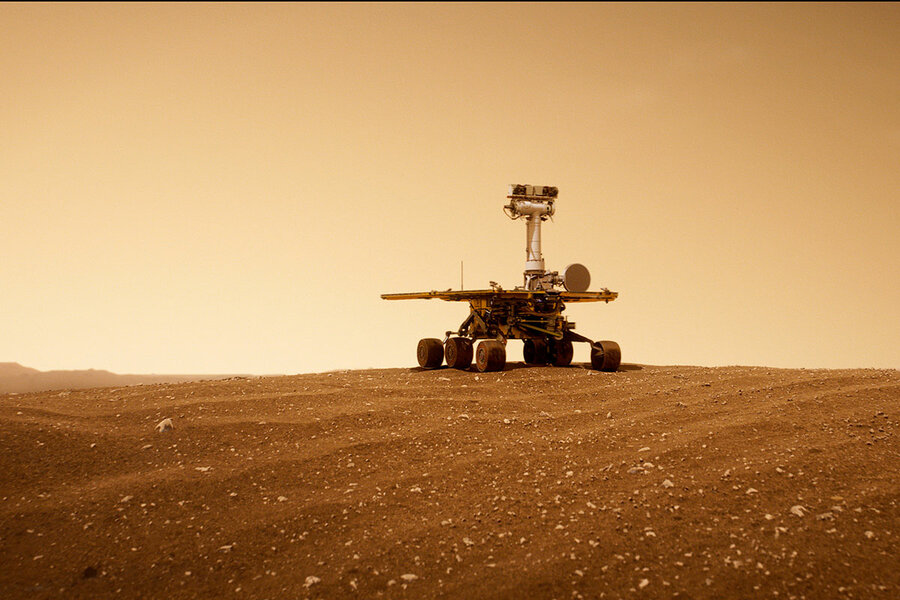‘Good Night Oppy’: How a documentary captures the human-robot bond
Loading...
It takes a village to raise a robot. A new documentary, “Good Night Oppy,” chronicles the familial bond between a pair of Mars rovers and their human “parents” at NASA. Opportunity and Spirit departed Earth in 2003. Upon successfully touching down on the red planet, the duo were only expected to last about 90 days. The scientists and engineers were flabbergasted that the pair survived for many years. In his latest film, director Ryan White (“Good Ol’ Freda,” “The Case Against 8”) examines the doting relationship between the control room crew and their robotic progeny. It’s a story of gumption. When a robot gets mired in quicksand 140 million miles away, how do you rescue it? “Good Night Oppy” is a testament to egoless team effort. The film ends its multidecade story with the launch of a new rover named Perseverance. Mr. White spoke recently with the Monitor via Zoom. The conversation has been edited for length and clarity.
What were the key themes you wanted to explore in the movie?
First of all, the connection between human and nonhuman was something I was very interested in. ... And then another big one is this idea of discovery and exploration, and especially with that sense of wonder and awe that we often have as children when we use our imaginations. ... Why can’t we as adults have that feeling anymore? And this group of humans did. They were going to a place that had literally never been seen before by mankind. And they were doing it by this avatar of theirs that they had created by their own design. And so I wanted the audience of the film to feel that sense of wonder.
Why We Wrote This
A story focused onWhen director Ryan White talks about his documentary “Good Night Oppy,” featuring Mars space rovers and their human handlers, he describes the bonds and emotions of family – and the teamwork it took to exceed expectations.
What were your favorite backstories about what inspired these scientists and engineers to choose their careers?
I think it’s important to remind people that this isn’t just Americans working on these projects. So, Vandi Verma, she’s a rover driver. We have a little bit of her backstory in our film. She’s from India and she got a book on space exploration for her [seventh] birthday, and she knew that’s what she wanted to do. ... Almost everyone in our film was an outsider. ... We wanted to be very conscious of making sure people, kids, especially watching the film, would see themselves represented on the screen by a potential role model. Like [Ashitey Trebi-Ollennu] from Ghana, who grew up taking radios apart in his small town, is now one of the lead engineers.
What does this movie reveal about human ingenuity and leadership as tools to solve unforeseen obstacles?
Ingenuity is at the center of the film. And I would say even more so than leadership. For sure, leadership plays a massive role in that. But I would say [what] comes to mind even more than leadership are teamwork and collaboration.
Steve Squyres, who is the head leader of this mission ... is always very careful to stress, “I was the principal investigator. I have no idea how to do almost everything that made this mission successful. I knew how to do a very slim portion of this mission, and then the next person knows a very slim portion of this mission, and they have no idea how to do most of the other mission.” What’s integral to these types of missions – and it sounds cheesy, but it is inspirational – is this idea of [how] everybody has to come together and do their part to pull off something bigger than us.
I was struck when Steve Squyres said, “The whole project was bound together by that feeling of love. You’re loving the rover and you’re loving the people.”
It’s probably the last word you would expect a principal scientist to be using. ... But, yeah, I do believe it’s driven by love. And you can see it even when we’ve had screenings and you see [the team] get to see each other, because they move on very fast to other missions and they get split up.
Was there a moment when you, as the filmmaker, became similarly emotional?
I was allowed to go in July of 2020 – so it was the height of COVID – to Perseverance’s launch. ... My cameraman had a camera on [Moogega] “Moo” Cooper, who’s a young Black woman in my film, and she was one of the announcers for [the launch]. And so I could see on my cellphone him recording her reacting to the launch, because this is her baby. ... Seeing her emotion while I was feeling the earth rumble and watching the rocket launch from my camera ... I definitely teared up and probably stayed that way for 30 to 60 minutes.
“Good Night Oppy” is in theaters now and will be available to stream on Amazon Prime Video starting Nov. 23. It is rated PG for some mild language.






